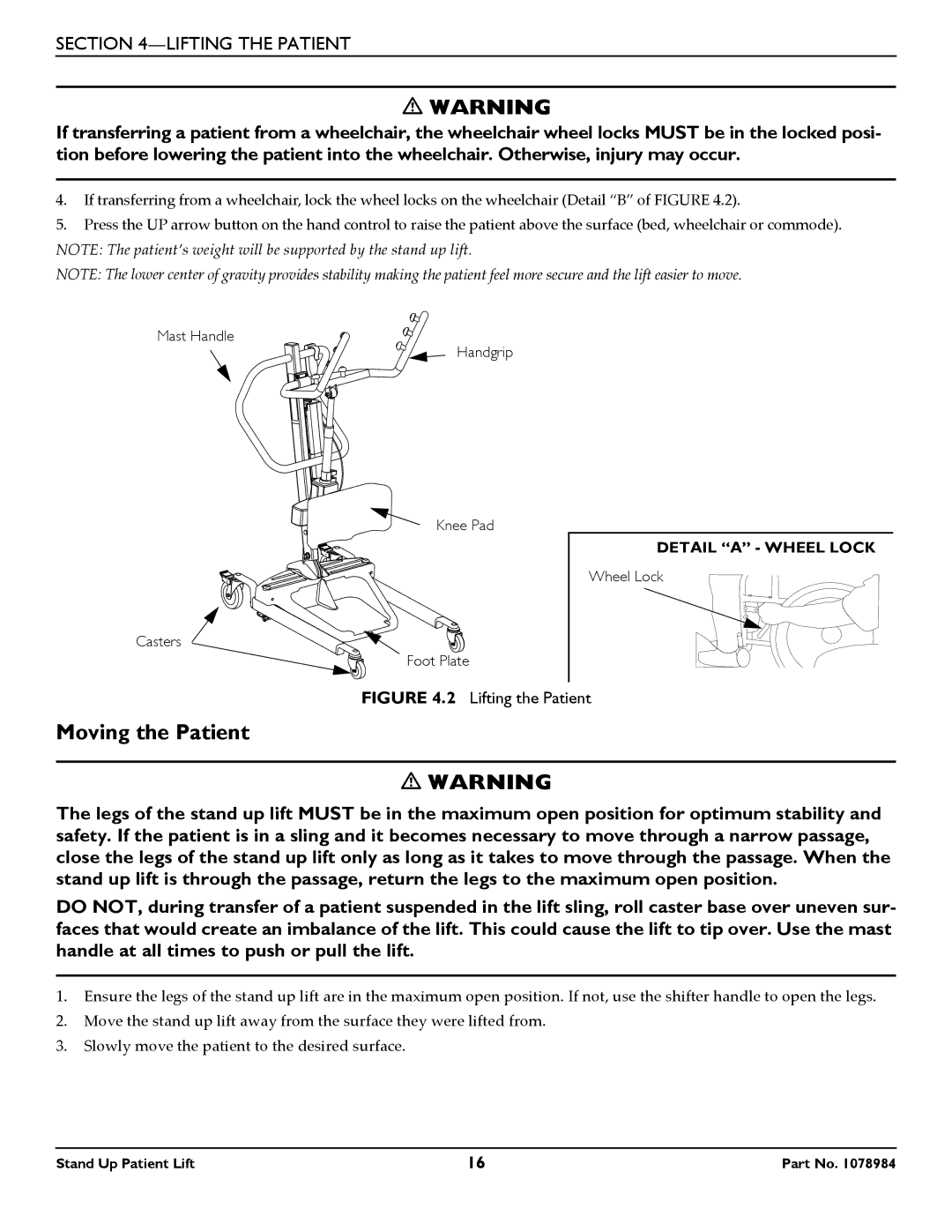
SECTION
WARNING
If transferring a patient from a wheelchair, the wheelchair wheel locks MUST be in the locked posi- tion before lowering the patient into the wheelchair. Otherwise, injury may occur.
4.If transferring from a wheelchair, lock the wheel locks on the wheelchair (Detail “B” of FIGURE 4.2).
5.Press the UP arrow button on the hand control to raise the patient above the surface (bed, wheelchair or commode). NOTE: The patient’s weight will be supported by the stand up lift.
NOTE: The lower center of gravity provides stability making the patient feel more secure and the lift easier to move.
Mast Handle
Handgrip
Knee Pad
Casters
Foot Plate
DETAIL “A” - WHEEL LOCK
Wheel Lock
FIGURE 4.2 Lifting the Patient
Moving the Patient
WARNING
The legs of the stand up lift MUST be in the maximum open position for optimum stability and safety. If the patient is in a sling and it becomes necessary to move through a narrow passage, close the legs of the stand up lift only as long as it takes to move through the passage. When the stand up lift is through the passage, return the legs to the maximum open position.
DO NOT, during transfer of a patient suspended in the lift sling, roll caster base over uneven sur- faces that would create an imbalance of the lift. This could cause the lift to tip over. Use the mast handle at all times to push or pull the lift.
1.Ensure the legs of the stand up lift are in the maximum open position. If not, use the shifter handle to open the legs.
2.Move the stand up lift away from the surface they were lifted from.
3.Slowly move the patient to the desired surface.
Stand Up Patient Lift | 16 | Part No. 1078984 |
